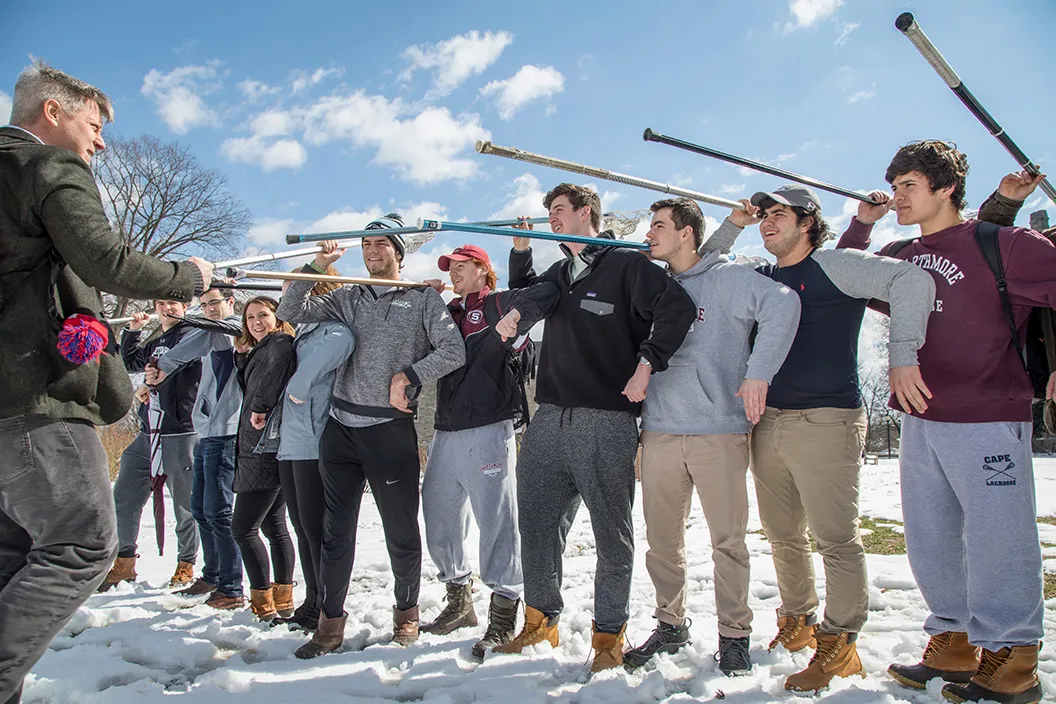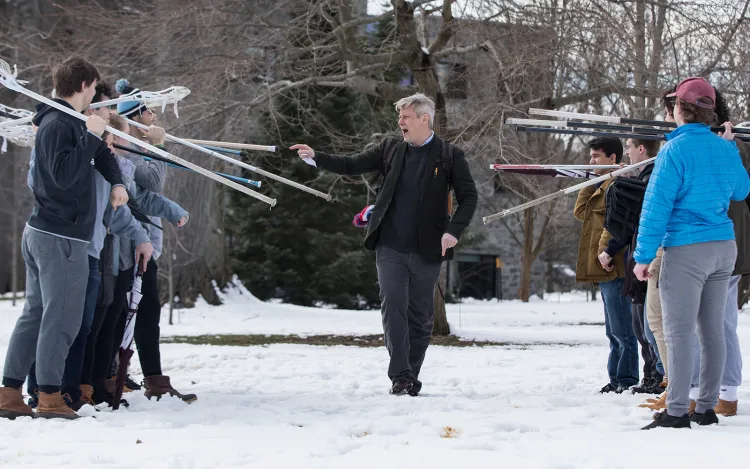Food and War in Ancient Rome

Ancient battles outside of class lead to a classics lesson
Breaking out of the classroom, Visiting Assistant Professor Jacob Morton has been known to take his students outside and create formations of battle from ancient Greece and Rome. Students organize themselves into a unit, but instead of javelins and breastplates, they carry lacrosse sticks and backpacks. Then they part into two armies, walking in lockstep to war. “It was particularly helpful to realize how the mechanics of ancient warfare worked at a granular level,” says Nate Truman ’18, an economics and Spanish major from St. Paul, Minn., “and how those mechanics could be exploited for an army’s victory or defeat.”
Morton explains that new weapons and tactics separate ancient Rome and Greece. “It went from this whole hiding and shooting an arrow thing to, ‘Let’s put on a lot of armor, line up in a field, and settle it in an hour with a lot of dead people,’” Morton said. “But it’s counterintuitive—you have to convince people to be willing to risk being stabbed in the face.” Combatants were motivated not by money but glory, Morton says. Commanders seized the most dangerous posts.

Visiting Professor Jacob Morton recruited members of the men’s lacrosse team to aid the battle simulation.
"But it’s counterintuitive—you have to convince people to be willing to risk being stabbed in the face," says Morton on the challenges of rallying troops in the ancient world.
Morton’s colorful banter—even referencing the rapper Meek Mill, in comparison to music Romans used to hype themselves up for battle—keeps spirits high and breathes life into lessons on how food drove Roman military policy. “The way [Morton] talks about the information is hilarious, and it makes it way more fun to learn about,” says Bryan Murray ’19, a biology major from Exton, Pa., who helped to wrangle eight of his lacrosse teammates for the battle.



